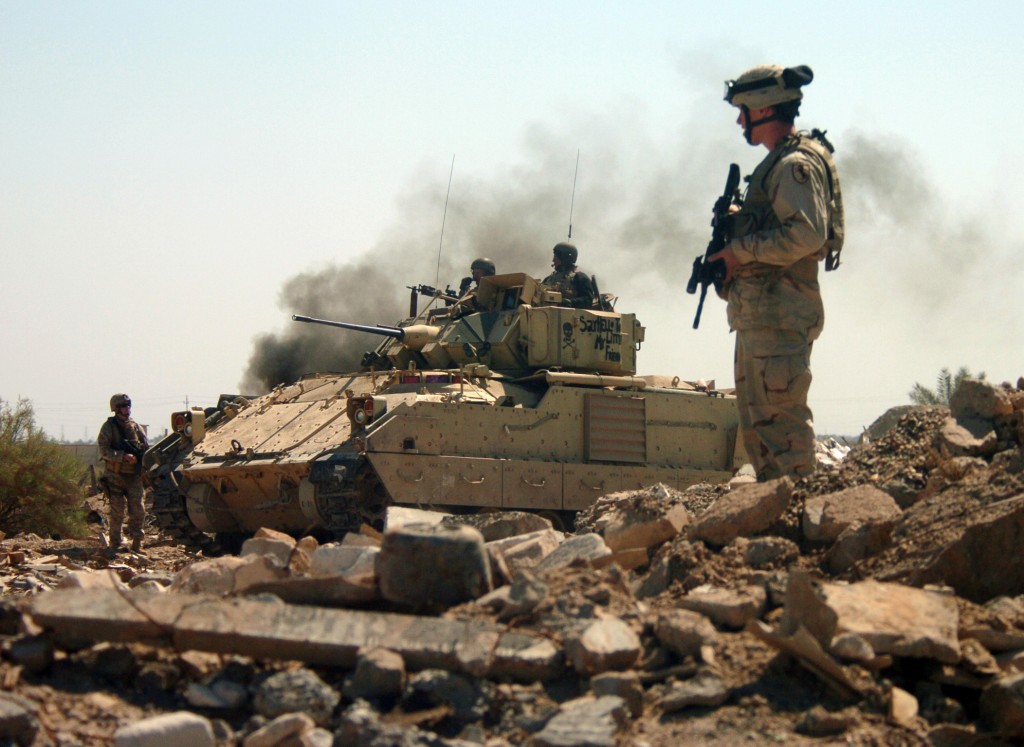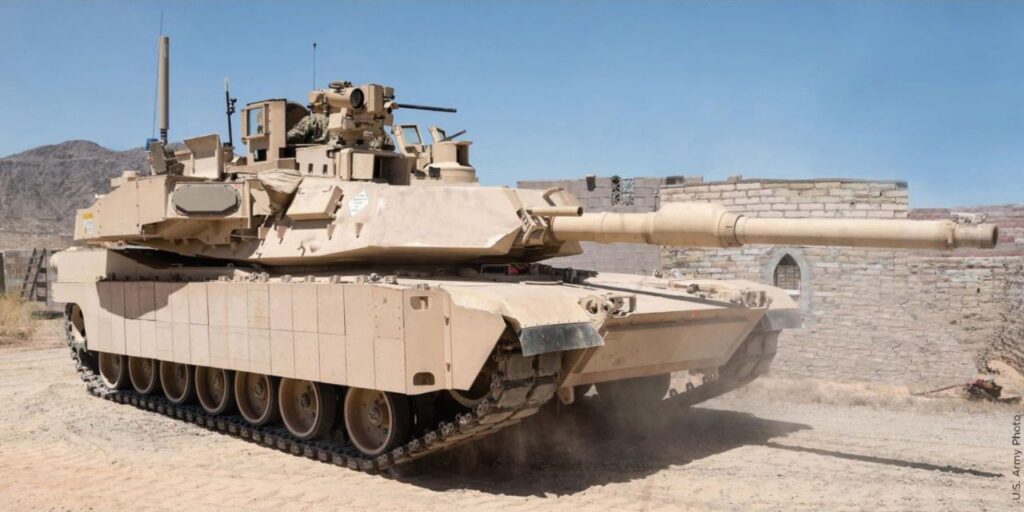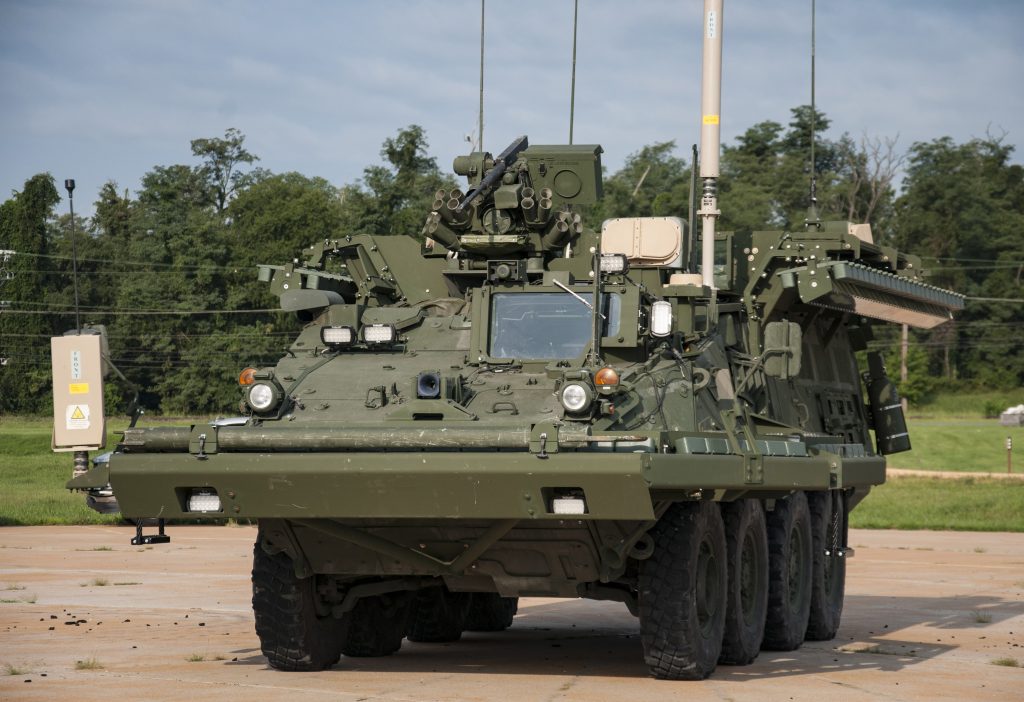All Armored Brigades To Get Active Protection Systems: Gen. Milley
Posted on

M2 Bradley in Iraq
WASHINGTON: The Army plans to equip all its M1 Abrams tanks and M2 Bradleys with Active Protection Systems, which shoot down incoming rounds, as soon as US companies can build enough, Chief of Staff Mark Milley told the Senate this morning. Currently the only combat-proven APS are Israeli and Russian, with US industry still ramping up.
The US Army is already buying the Israeli Trophy APS for every M1 heavy tank in four armored brigades slated for early deployment to a crisis. (Three brigades are in the 2019 budget, one in 2018). But those brigades also include hundreds of M2 Bradleys, medium-weight troop carriers with significant armament and armor but little spare capacity to handle further upgrades. Instead of Trophy, which was built for tanks, the Army is testing an APS called Iron Fist Light, also Israeli, on the Bradleys.
At this morning’s hearing of the Senate Appropriations subcommittee on defense, Sen. Steve Daines asked when the Bradleys would start getting Active Protection Systems.
“We’re hoping to do that here in the next 24 months,” Gen. Milley replied. “These systems were built for (foreign) vehicles, so we’re taking these systems and we’re adapting them right now, as we speak, to our vehicles. And there’s some testing and prototyping, safety testing, that has to be done with these before they are ready for operational use in the four brigades that we’ve selected, but we hope to have that done within 24 months.”

Army M1 Abrams tank with a trial installation of the Israeli-made Trophy Active Protection System (APS)
When will National Guard units get APS? Daines asked, noting the Guard armor company in his home state, Montana.
So far, Milley said, the only APS in the budget are for the four active-duty brigades, which are expected to be among the “first responders” to any crisis abroad. “We don’t yet have a schedule for the Guard, or the rest of the regular Army, but our intent is to outfit the total force, the total Army, with active protective systems in the years ahead,” he pledged. The Army has nine active-duty armor brigades — soon to grow to 10 — plus five in the Guard.
What’s the hold-up? “Active protection systems are manufactured only in…three (countries) right now,” Milley explained. “(One is) Russia, which we’re not going to get them from. (The others are) Israel and the United States, and the companies in the United States, they’re not ready yet for full rate production.
“We have not worked out the schedule,” Milley emphasized, “but…once the US companies come on line with the full system, the intent is to outfit the entire heavy force, all of our vehicles, all the ground vehicles — the Bradleys, the tanks, any future combat vehicles — with active protective systems.”
Milley is also interested on APS on “some aircraft,” i.e. Army helicopters, though “we haven’t worked out the aircraft piece.”

Iron Curtain test installation on a US Army Stryker
The only US Active Protection System in contention is Artis LLC’s Iron Curtain. Developed specifically for lighter vehicles, Iron Curtain is currently being tested on the eight-wheeled Stryker, a light armored vehicle not used in heavy armored brigades. Instead, there are specialized Stryker formations. Milley didn’t speak to APS for Stryker.
However, Milley did emphasize the importance of converting all Strykers from a standard flat underbody to a double-v-hull that helps deflect the blast from roadside bombs and land mines.
“Over the last 16-17 years of continuous combat, we’ve had a lot of lessons learned, and one of those lessons learned is the vulnerability to IEDS, improvised explosive devices, that detonate underneath the vehicle,” Milley. “We also learned that making a v (shape) in the bottom of the hull disperses the energy from the explosive and provides much greater survivability to the crew inside.”
How much better, asked subcommittee chairman Richard Shelby.
“It’s significantly better,” Milley replied, promising to provide specific figures. “I don’t know the exact numbers, but I would put it up at 80-90 percent over a flat bottom.”
Originally, the Army had planned to leave many Stryker units with flat underbodies, including the 2nd Cavalry based in Europe. While the Russian Army would probably not rely on improvised roadside bombs — although its proxies might — Russia has a large arsenal of landmines, some of which can be quickly sown over a wide area by aircraft or artillery. If Russia decided to occupy the Baltic States, for example, it would probably seize territory as fast as possible and then defend its fait accompli with landmines, anti-tank defenses, and air defenses to deter any counteroffensive.
Subscribe to our newsletter
Promotions, new products and sales. Directly to your inbox.
